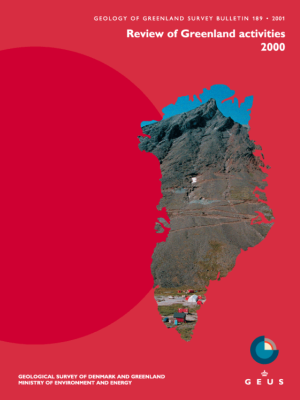Holocene temperature and environmental reconstruction from lake sediments in the Søndre Strømfjord region, southern West Greenland
DOI:
https://doi.org/10.34194/ggub.v189.5157Abstract
Instrumental temperature records indicate that the mean annual surface-air temperature of the Earth has risen approximately 0.6°C since 1860 (IPCC 2001). Increased global warming can have considerable influence at high latitudes, and among the major concerns are the effects on the sensitive arctic ecosystems and the possible reduction in the diversity of regional flora and fauna. Arctic organisms are highly adapted to extreme environmental conditions and have difficulties coping with any additional stresses or disturbances.
Downloads
Published
Issue
Section
License
This article is distributed under a CC-BY 4.0 licence, permitting free redistribution and reproduction for any purpose, even commercial, provided proper citation of the original work. Author(s) retain copyright over the article contents.


